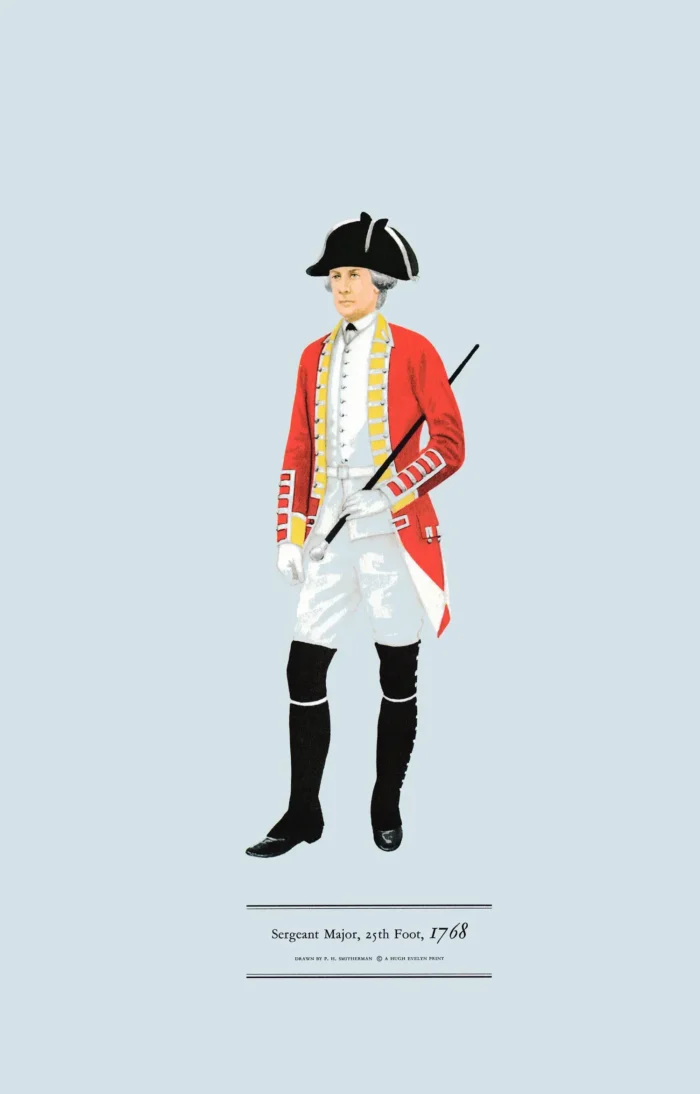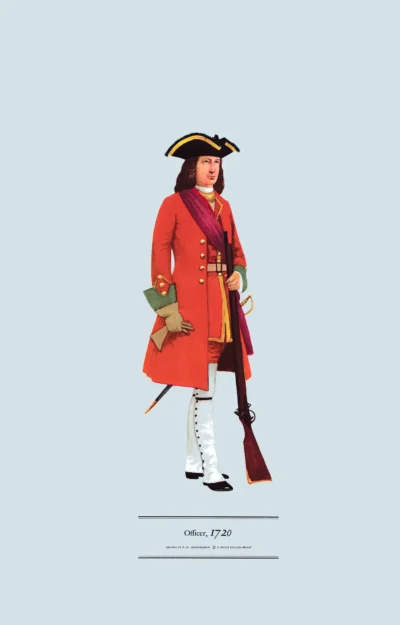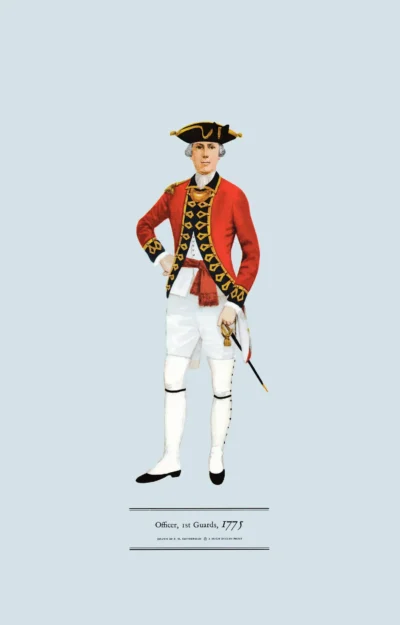Sergeant Major, 25th Foot, 1768 (King’s Own Scottish Borderers)
Original price was: £15.00.£10.00Current price is: £10.00.
In 2006 The King’s Own Scottish Borderers [KOSB] merged with 7 other Scottish regiments into The Royal Regiment of Scotland, then with the Royal Scots to form the Royal Scots Borderers, but in 2021 was disbanded, the personnel moving to the newly formed Ranger Regiment (scroll down for a more detailed Description)
Published 1965 by © Hugh Evelyn Limited; drawn by Colonel Philip Henry Smitherman (1910-1982), Royal Corps of Signals
Size: c. 24.5 x 37.5 cm [9 ½ ″ x 14 ½ ″] (may vary slightly from printers’ cut 50 years ago)
Printed on on medium cardstock weighing 144 g/sm2 faced in light greyish blue (RGB c. d4e1e8)
Print is STANDARD size – shipping is the same for 1 to 10 prints (based on largest print size in your order) – see Shipping & Returns.
In stock
Description
The 25th, later King’s Own Scottish Borderers [KOSB], was raised in 1689 by the Earl of Leven to defend Edinburgh against the Jacobites. Within weeks they fought at the Battle of Killiecrankie. The regiment performed well and thereafter recruited by drum beat in Edinburgh without the provost’s permission. It’s battle honours include Namur, Fontenoy, Culloden, Minden and Alexandria when recruitment moved to the Borders. They fought in Afghanistan, two World Wars, Korea and the Gulf War. In 2006 it merged into the Royal Regiment of Scotland but then merged with the Royal Scots. In 2021, the battalion was disbanded, its personnel transferred to the Ranger Regiment. Portraits of sergeant-majors are rare. The details here are from a contemporary water-colour of members of the regiment, one a sergeant major. His uniform, with silver lace and smart cut, resembles that of an officer. The hat developed from the style of 1680-1707 to the tricorne shape of 1743. The front ‘cock’ has almost disappeared and resembles the modern version of the cocked hat, worn until recently by the quartermasters of the Foot Guards. A turned-down collar like this is shown on the coats of several Foot Guards privates depicted in the Blenheim tapestries. The turned-back skirts of the coat have become stylised and less clumsy, and the cuff has a slash with four buttons. In the picture on which this plate is based, only the sergeant-major and drummers are shown with slashes, the rest of the regiment having plain buttoned cuffs. The uniform of the sergeant-major, as for the drummers, was decided by the commanding officer, and often purchased by him, to conform more to his wishes than to regulations.
Source: A series of watercolours of the Regiment.
Additional information
| Weight | 0.0131 kg |
|---|---|
| Dimensions | 23 × 37 cm |





